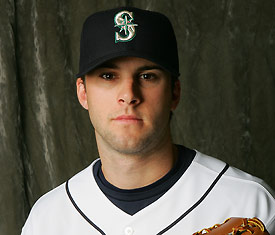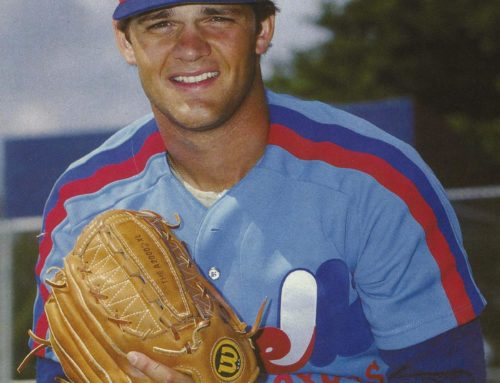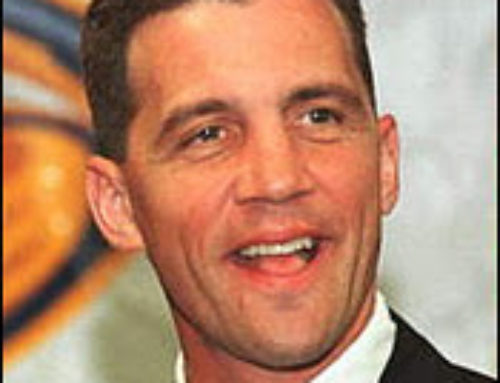Project Description
Brandon John Morrow born July 26, 1984 is an American professional baseball pitcher with the Toronto Blue Jays of Major League Baseball. He can throw for a high velocity, often getting into the mid to high-90’s with his fastball. On August 8, 2010, Morrow pitched a complete game one hitter with 17 strikeouts, coming within one out of a no-hitter.
Brandon Morrow found out that he had Type 1 diabetes when he was 18 and a senior in high school.During January workouts for baseball season, Morrow experienced such symptoms as dehydration. A friend who had done a research project on the subject told Morrow that those were the symptoms of diabetes. Morrow went to a doctor and found out his glucose readings were extremely high. It was Type 1 diabetes.
“I know how difficult it was for me at 18 years old,” the Blue Jays pitcher told a group of more than 125 children who were much younger when they discovered they had the disease, also know as juvenile diabetes. “I never could imagine how it must be with young kids.”
Morrow was talking to children and answering their questions as part of the annual PLAY Campaign at Rogers Center.
Morrow was impressed by the questions from the children, which included ones about the insulin pump he has worn for seven years – although not when pitching.
“Even at such a young age, they really know the right questions to ask,” he said later, after he and teammate Eric Thames had an autograph session. “Diabetes is a disease that, when you have it, you need to mature and you need to grow up and really be able to handle that.
“A lot of times, you’re on your own and you have to know
An important part of dealing with diabetes is exercise. The Blue Jays teamed up with the Juvenile Diabetes Research Foundation in the PLAY Campaign that promotes healthy lifestyle.
“That’s why we’re out here,” Morrow said. “We’re getting them excited about exercising and showing them the advantages that it can have in regulating your blood sugar, and keeping your metabolism up is a big part of that.”
The two-hour program involved five stations where the children participated in various forms of stretching, exercise and baseball activities. They also listened to a talk about steroids from Don Hooton of the Taylor Hooton Foundation.
Blue Jays athletic trainers George Poulis, Hap Hudson, intern trainer Adrian Wellman and strength coach Bryan King also took part in the program with Morrow and Thames.
Morrow stressed to the children the importance of keeping a good routine to help maintain stable glucose counts, especially for someone playing sports.
“You can get all the information you want and your parents can help you for a while, but it comes down to doing it yourself, really,” he said later. “And learning and asking questions — a lot of it is trial and error, and that’s how I came by my routine, just finding out what works for you, especially on the days that you’re going to compete.
“I tell the kids, ‘Find a routine, eat the same foods, check the blood sugars at the same time,'” he said. “That helps take the guesswork out of it.”
Morrow explained to the children and their parents his routine on his pitching day.
“I always go through the same process every day that I pitch, which is once every fifth day as a starter,” he explained. “I usually have the same thing for breakfast — it’s a little tougher when you’re on the road — eat the same thing for lunch, then I come into the ballpark and relax a little while. And about an hour and a half before the game — I’m checking my blood sugar throughout the day — I check it again, have a protein bar before the game. I know how that’s going to react, 25 grams of carbs, good, solid energy bar, good, even distribution.”
As meticulous as he is about his preparation and routine, Morrow said it is not necessarily a character trait in other aspects of his life.
“Strangely, no,” he said. “In most of my life, I’m not a very neat person. I would say I’m really not like that. I don’t put things on my desk a certain way.”
But controlling his diabetes is the most important thing to him, both in his profession and his life.
“If you don’t have that attention to detail, then it can really harm you during the game if you drop low [in glucose] just because you weren’t paying attention or were being lazy one day,” he said. “If you’re pitching in the third inning and drop low, that could cost you — it’s not just you, but it hurts your team.”
Thames was impressed by Morrow and the way the children responded to pitcher.
“He relates to them,” the outfielder said. “To see him able to deal with [diabetes] and thrive — that’s all that counts.”
There was one question for Thames from one of the children: What is his favorite color?
“My favorite color is blue,” Thames said, followed by a burst of applause







Leave A Comment